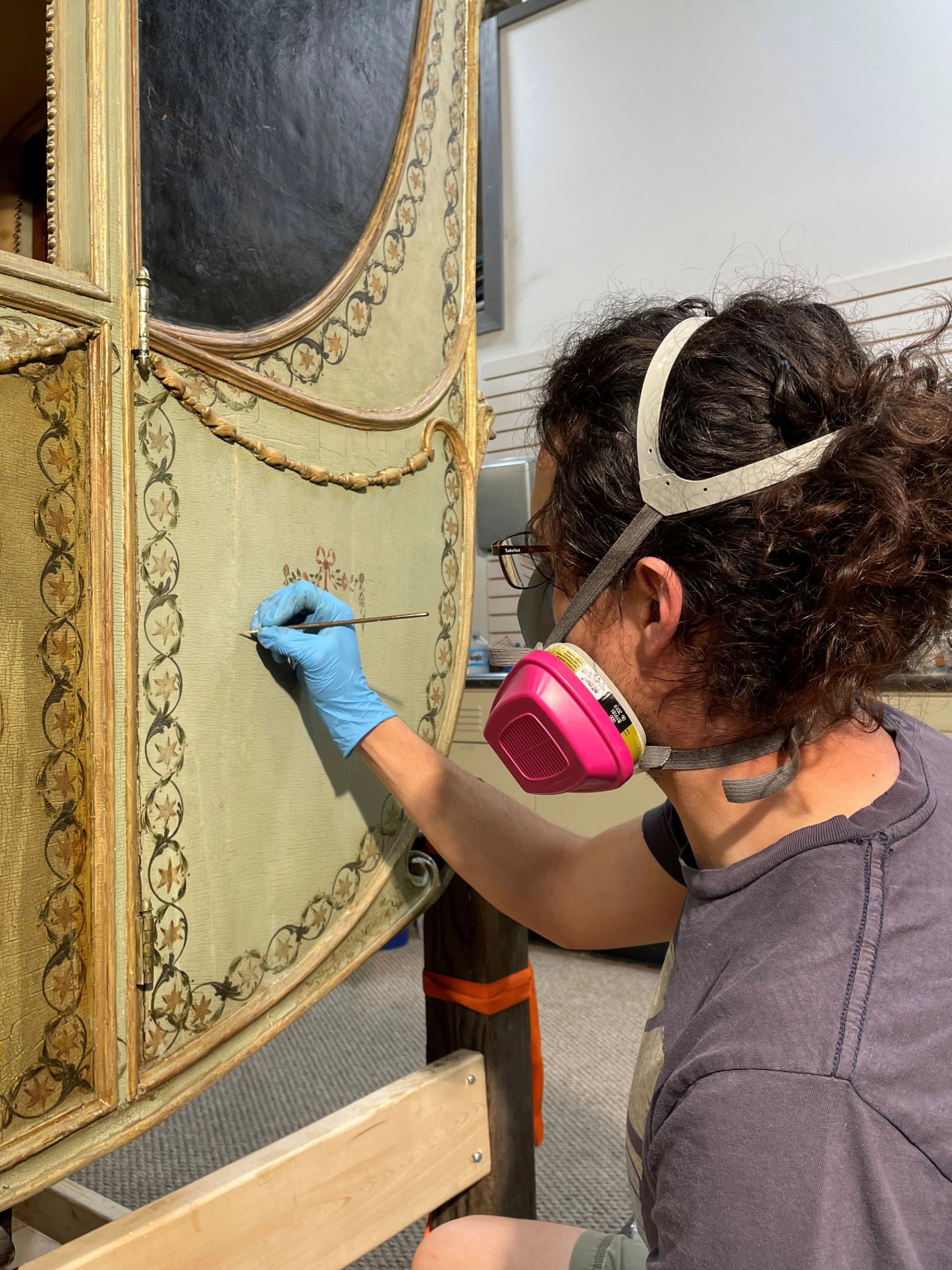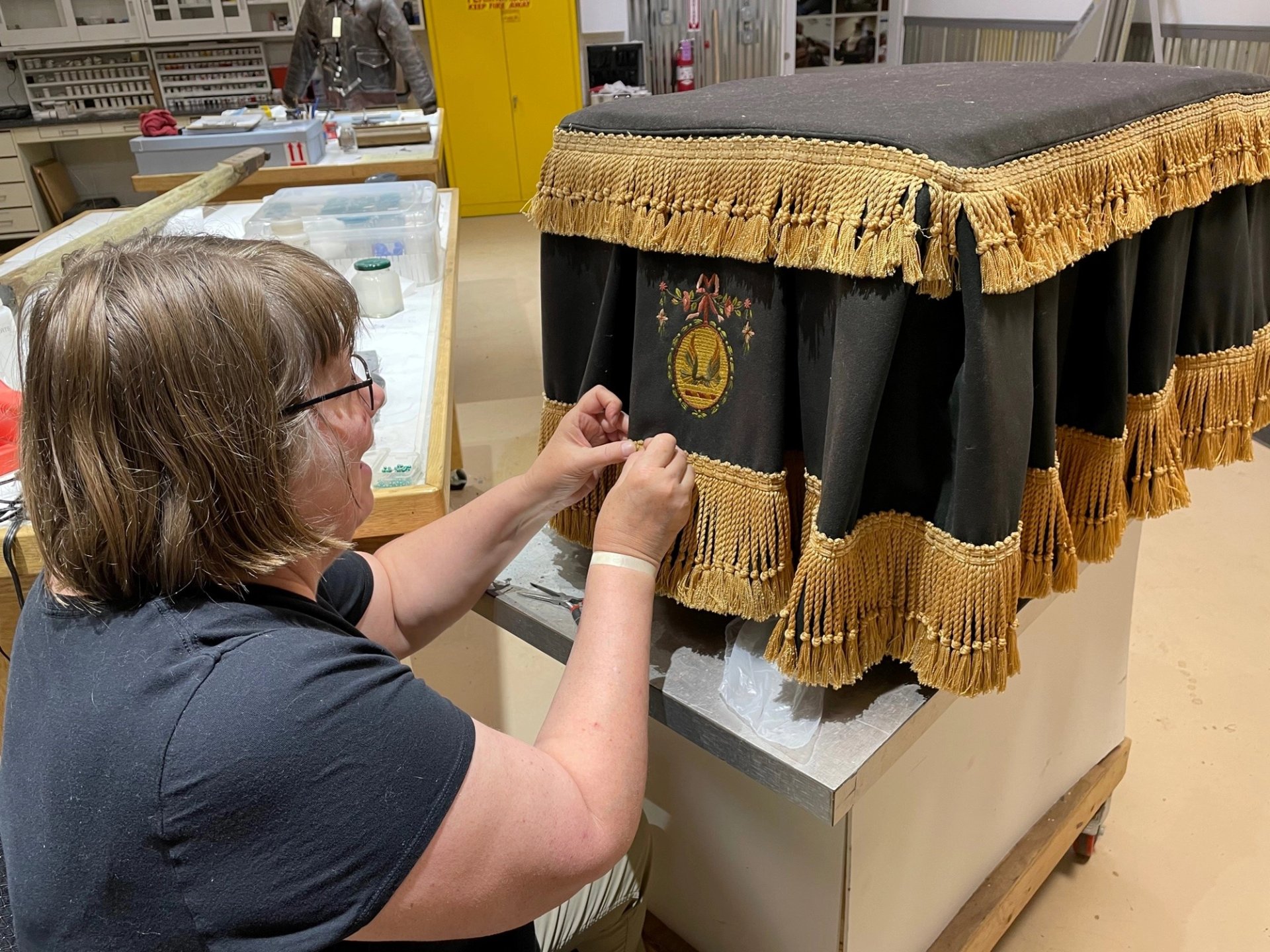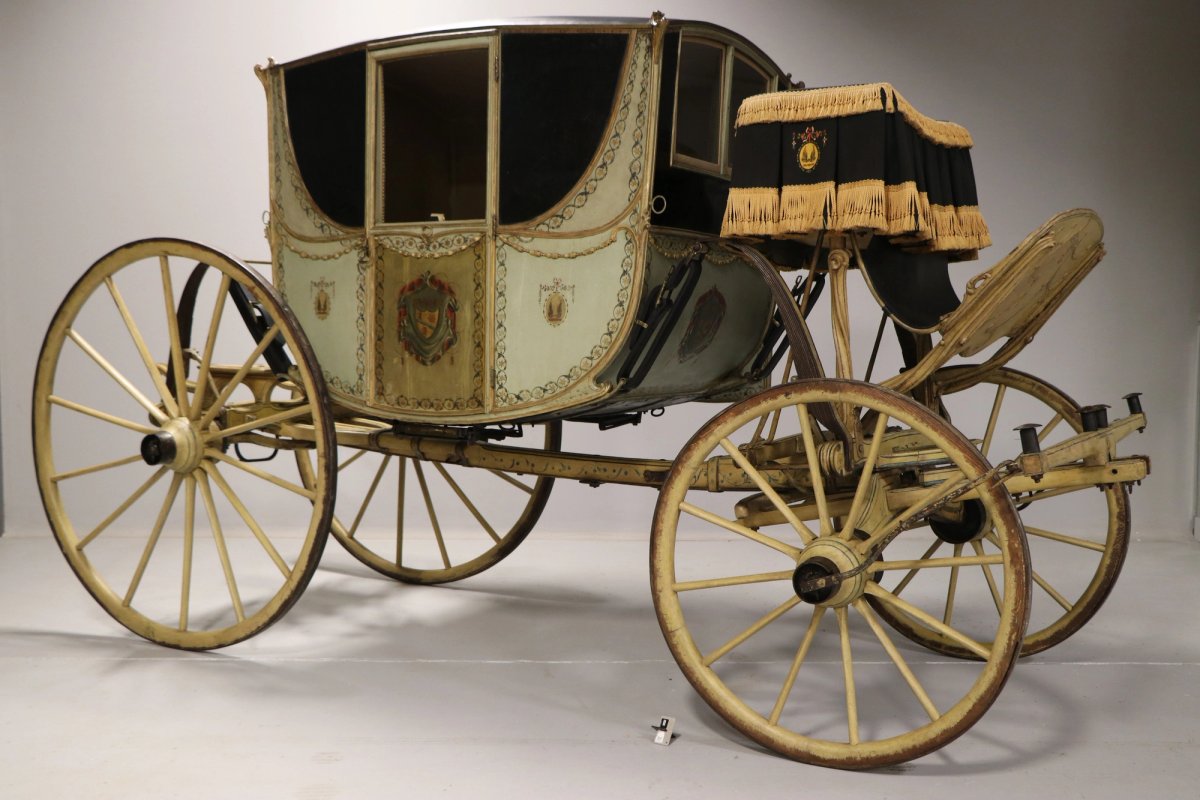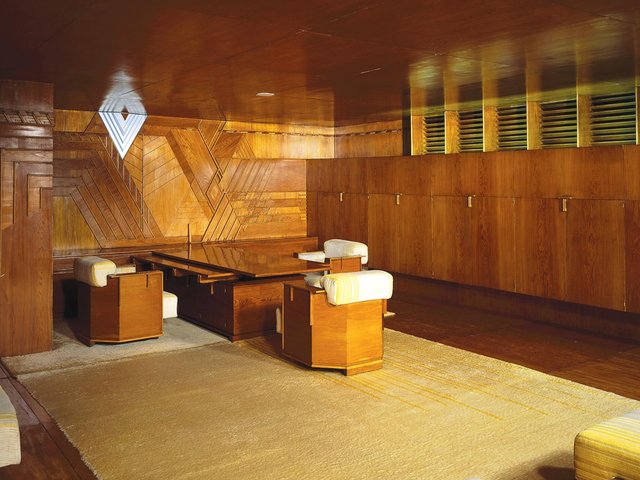The New-York Historical Society, the city’s oldest museum, is offering a unique, in-person opportunity to watch the conservation of one of their prized possessions: the Beekman Family Coach. Conservation has been ongoing since the fall of 2020 and will culminate this weekend with a live viewing of the final stages of work by Brian Howard’s conservation studio.
One of only three known colonial carriages to remain intact, the coach was made around 1770, likely in England, and purchased by the wealthy New York merchant, James Beekman. The museum’s curator Debra Schmidt Bach says that the coach was repainted five times over the next two decades, a common practice to mark the owner’s ability to keep up with changing taste. The coach was kept in good condition for centuries, first in the Beekman family country home in what is now the Upper East Side, and then in Oyster Bay on Long Island, before it was donated to the museum in 1911.

Restoration work is done on a side panel of the carriage Courtesy of the New-York Historical Society
“As a rare, intact artifact of colonial and post-Revolutionary New York, the Beekman Family Coach is both a work of art and important material evidence of the lives of the New Yorkers who owned, drove and cared for it,” Schmidt Bach says.
The conservation project, made possible with the Federal Save America's Treasures grant administered by the Institute of Museum and Library Services, focused in part on stabilising the coach and restoring the 1790s paint, a celadon green common in Neo-Classical decorative arts.
To return to this paint layer—the most recent and intact—conservators removed a thick varnish applied in the mid-20th century that had since turned dark ochre. The team developed a custom solvent and tested small patches to make sure the older paint and decorations were not stripped away as well. The final patch of varnish left on a door will be removed during the live conservation.

A conservator restores the fringe on a coach seat. Most of the interior textiles likely date to the late 1700s Courtesy of the New-York Historical Society
Howard’s team also investigated which materials on the coach are likely original. One surprising find was that the interior textiles, which were assumed to have been replaced, likely date to the late 1700s, with a few patched areas fixed in the 20th century. The floor carpet, Russian leather trim and brass tacks of the interior were also identified as likely original, as were the wheels, iron tires, and undercarriage, the last of which was possibly rebuilt using original materials.
Visitors interested in learning more will have the opportunity to discuss the craft of conservation with the experts and watch the final stages of the project this weekend, with live sessions taking place on 23-25 July.



